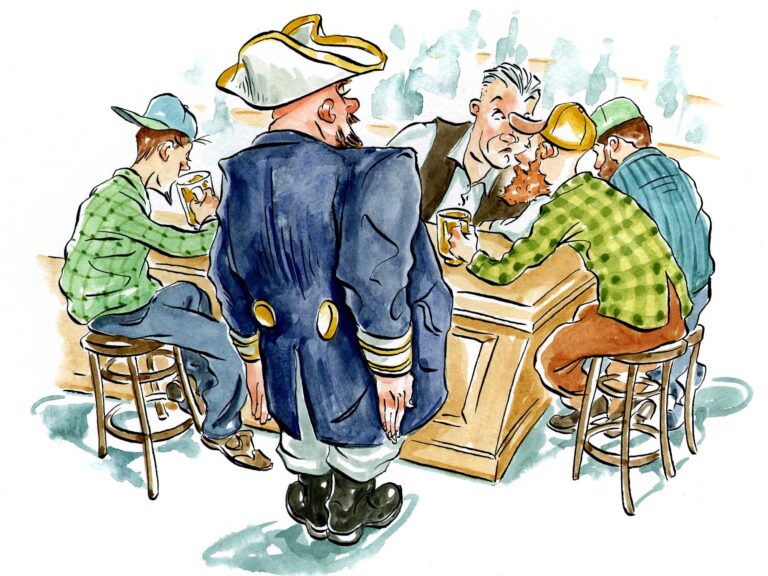Boating Writers International 11th Annual Writing Contest – Peter McDonald’s “Seamanship” won 1st place in the Boating Columns category.
Professional tanker captains call it the “Poor Man’s Tugboat.” It’s a technique more formally known as dredging-using an anchor to help maneuver large vessels in close quarters. It’s also something you can use on your boat for getting in and out of tight spots.
According to Capt. Thomas Bushy, who runs the training ship at the Massachusetts Maritime Academy, dredging allows you to use your anchor to make a pivot point that you can spin around-usually at the bow. “It’s a skill that’s not as popular as it once was,” says Bushy. “Because of tugboats, people aren’t taught to do it.”
Still, some ship captains use the age-old technique today as a means of making 90-degree turns in cramped turning basins or negotiating narrow channels. And even though twin engines and bow thrusters make the maneuver unnecessary most of the time, it’s a neat trick to know and one that will separate you from the average Joe Boater.
When might you need to try it? Say you have a twin-engine boat and you lose one of your powerplants, which greatly reduces your maneuverability. Or you don’t have bow thrusters and you can’t work your way into a tight slip or crowded anchorage-especially when wind and current are working against you. Knowing how to dredge the anchor could mean the difference between controlling your boat and crashing it.
Here’s how it works. The idea is to put down enough weight-your anchor-to hold the bow in place against external forces such as wind or current. This way, the bow, not the stern, becomes the boat’s turning axis. All you do is lower the anchor until it’s just sitting on the bottom, not hooked in solid. You should be able to feel it skipping or bouncing through the rode. It’s best to try it in water that’s no more than two to three times deeper than your draft. If the water is too deep, handling the long rode cuts into the quick placing and removing of the pivot point, which is a key element to the technique. Once you get the feel of it, though, you’ll be able to spin on a dime.
One potential problem is that today’s anchors, such as the Danforth, are designed to be lightweight with high holding power. You don’t want the anchor to take a set, but you do want enough weight for a temporary hold on the bottom. One solution is to add a lot of chain to your rode.
You also need a crew, because dredging is a two-person operation: one at the helm, the other on the rode. And the person handling the anchor had better be fast. “You need the ability to pay out and haul in quickly to adjust for changing depth,” says Bushy.
Once you have the anchor on the bottom, try to turn your boat. You can tell it’s working if you have quick rudder-response at the helm. That means the boat is reacting to the pivot. Don’t be timid at the controls. “The more power you put on,” says Bushy, “the more response you’ll get and the better your maneuver will be.”
At the helm, turn your wheel in the direction you want to go and power up. Your bow should remain in the same spot, while your stern should come around behind you. Swing your stern to line up with your slip, then have your crew haul the anchor while you ease back into it. Or you can execute a tight turn in a narrow channel in dicey conditions.
Again, it’s not a method you’ll need to use every day. But you’ll be glad you know how to dredge the anchor when caught in one of those once-in-a-hundred situations-times when having pinpoint turning control is paramount. Plus, when people at the dock ask you what you just did, you can tell them a Poor Man’s Tugboat and sound like a real pro.









